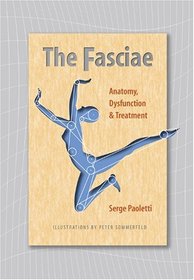Search -
The Fasciae: Anatomy, Dysfunction and Treatment
The Fasciae Anatomy Dysfunction and Treatment
Author:
The fasciae comprise a wide variety of body tissues including the membranes, ligaments, tendons, and mesenteries. These tissues are all derived from the mesoderm, which undergoes coiling or rolling movements during embryonic development. This is the origin of the inherent micromovements, or motility, that are so important in many osteopathic app... more »
Author:
The fasciae comprise a wide variety of body tissues including the membranes, ligaments, tendons, and mesenteries. These tissues are all derived from the mesoderm, which undergoes coiling or rolling movements during embryonic development. This is the origin of the inherent micromovements, or motility, that are so important in many osteopathic app... more »
ISBN-13: 9780939616534
ISBN-10: 093961653X
Publication Date: 8/1/2006
Pages: 314
Rating: ?
ISBN-10: 093961653X
Publication Date: 8/1/2006
Pages: 314
Rating: ?
0 stars, based on 0 rating
Genres:
- Medicine >> Administration & Policy >> Hospital Administration
- Medicine >> Basic Science >> Anatomy
- Medicine >> General
- Medical Books >> Basic Sciences >> Anatomy
- Medical Books >> Administration & Medicine Economics >> Hospital Administration




